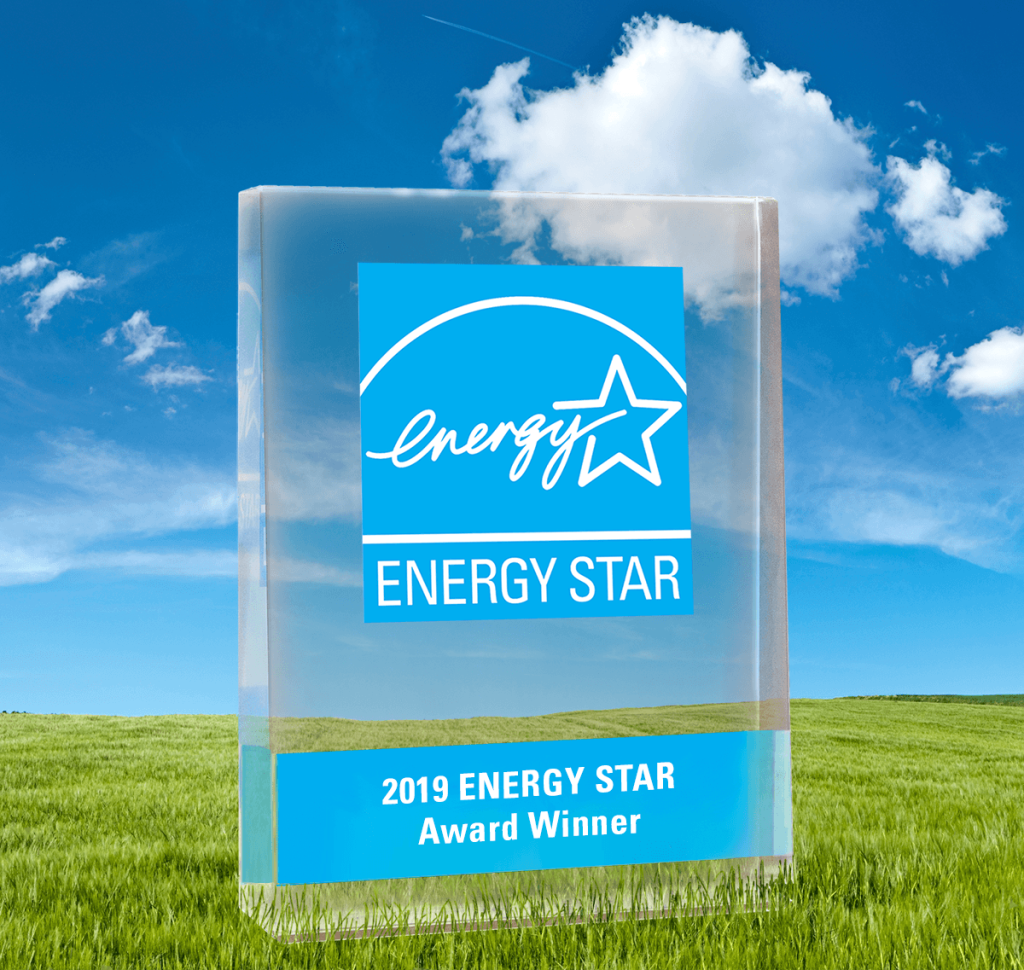Industry leaders from Grubb Properties and MG Properties Group recently shared insights on big data, benchmarking and forecasting with Yardi’s Paul Yount. “You won’t be successful in any market if you don’t have the right tools. You need the data. You have to be ready and prepared,” said Joe Anfuso, chief financial officer at MG Properties Group. Nothing could have been truer for real estate companies in 2020. With unanticipated challenges brought by the COVID-19 pandemic, real estate operators had to act fast to protect their bottom lines and keep staff and residents safe. For most companies, that meant adopting technology to transform their businesses. Read on to learn how Grubb Properties and MG Properties Group have been using Asset IQ, Yardi’s multifamily asset management software part of the Yardi Elevate suite of multifamily solutions, to guide decisions and improve performance with better data. Pivoting to online services With the growing demand for contactless leasing and transactions, many operators have made the pivot to doing business online. And it’s likely that contactless leasing — including self-guided tours — will be around long after the pandemic. Additionally, asset intelligence driven by big data has been guiding real estate operators through challenging times and will continue to lead the way. “2020 budget numbers were very different from what we projected in 2019. We didn’t see the normal seasonal changes, and budgets were pretty much out the window which has made competitor and peer data very important to accurately measure performance. We need to know how we’re measuring up to our competitors, what concessions and lease terms we’re offering and if we’re keeping the back door closed to avoid being in a vulnerable position,” said Shawn Cardner, executive vice president of Grubb Properties. According to Joe Anfuso,...
Energy Benchmarking
Merrill Gardens + Yardi
When you invest in your energy strategy, the rewards are proportionate. Simply put, the upgrades can pay for themselves. You just have to get the ball rolling first. That was just one of the key takeaways from our recent webinar on energy efficiency with McKnight’s Senior Living. Randy Moss of Yardi led the discussion on ENERGY STAR benchmarking and best practices for providers, and he was joined by Christopher Wright from Merrill Gardens, who shared his company’s own experience with tracking energy usage and reducing spend. Merrill Gardens’ road to energy success Starting in 2016, Merrill Gardens was required to record and report their energy usage by the city of Seattle. And at first, everything was done manually. Staff were pulling data from paper bills and accounting systems to upload into ENERGY STAR for benchmarking. Eventually, the city’s utility provider enabled automated data sharing, which simplified the entire process. The state of California soon followed with regulatory requirements, and seeing the writing on the wall, Merrill Gardens began rolling out benchmarking at all of their communities nationwide. Like in Seattle, many utilities needed manual data entry at first, but nowadays, the majority allow automated data transfer. By late 2019, Merrill Gardens had a year’s worth of data, which gave them great visibility into their buildings’ usage compared to one another. “Based on those sorts of trends, we already had the ability to identify buildings to focus special attention on for CapEx and operation improvements,” said Wright. Unfortunately, the pandemic brought new hurdles, but that only sharpened their focus. “In early 2020, like everyone else, we discovered our resources were suddenly and unexpectedly limited, while at the same time, savings and operational efficiencies were even more important,” said Wright. “Partnering with Yardi over the last...
Standard of Excellence
Energy Star Awards
The U.S. Environmental Protection Agency’s designation of Yardi as a 2019 ENERGY STAR® Award recipient in the service and product provider category was previously announced in this space. The award recognizes the company’s outstanding contributions to protecting the environment through superior energy efficiency achievements. More than 180 organizations across a broad swath of industries joined Yardi in receiving ENERGY STAR awards in April. Some of their achievements that ENERGY STAR documented are summarized below. Along with saving more than 5.6 million kilowatt-hours from LED retrofit and solar programs, Chicago apartment community developer and manager AMLI Residential engaged its leasing staff to educate residents and prospective residents on the benefits of living in an ENERGY STAR-certified community. Boston Properties incorporated cost recovery for ENERGY STAR certification, sub-metering of high-intensity tenant equipment and tenant energy disclosure through ENERGY STAR Portfolio Manager® into its master lease form. The self-administered and self-managed real estate investment trust also achieved ENERGY STAR certification for 77 properties in 2018. Bozzuto Management Company of Greenbelt, Md., pursued 100% benchmarking in ENERGY STAR Portfolio Manager for all managed assets and achieved energy reductions of more than 3% and 2% in site and source energy usage, respectively, across its portfolio in 2017, which equates to a calculated energy cost savings of more than $4 million. The manager of more than 255 multifamily communities also communicates sustainability and ENERGY STAR issues through its internal Bozzuto in the Know program. CommonWealth Partners, a Los Angeles private real estate investment, development, management and operating company, developed an internal Battle of the Buildings Bootcamp competition that focused on empowering properties to reduce energy, water and waste over three months. The effort saved more than 12,000 megawatt-hours of energy, 16,000 kilogallons of water and more than 3,400 metric tons of carbon dioxide equivalent. Fairfax (Va.) County Public Schools, which serves more than 190,000 students, has saved more than $23 million since 2014 through a comprehensive energy program. The 10th largest school division in the U.S. also enacted student-conducted home energy audits, a Battle of the Buildings competition and extensive promotion of ENERGY STAR and energy efficiency through social media. Hudson Pacific Properties, a vertically integrated real estate company in Los Angeles, implemented an engagement and recognition program that recognized properties that achieved the largest ENERGY STAR score improvement, hosted the best tenant engagement event and demonstrated the largest reductions in energy, water and waste usage. Los Angeles-based Kilroy Realty Corporation received ENERGY STAR Charter Tenant recognition for one of its offices and promoted ENERGY STAR in an innovative TEDx talk. It also joined the BOMA W2 challenge, an initiative built with the support of a grant from Yardi, across 84 buildings. LBA Realty LLC achieved ENERGY STAR certification for 21 properties in 2018. The Irvine, Calif. office and industrial property manager and investor also increased its average ENERGY STAR score portfolio-wide from 78 to 81 and reduced its average weather-normalized source energy use intensity by over 5% from 2017-18. Memorial Hermann Health System of Houston saved more than 14 million kilowatt hours by retrofitting light fixtures. It also became the first healthcare system in Texas to utilize new ventilation rate standards that reduce energy use while still meeting air change rates set by the department of health. Principal Real Estate Investors LLC of Des Moines, Iowa, achieved more than 3% reduction in average weather-normalized source energy use intensity from 2017-18. The company has achieved more than $52 million in cumulative avoided energy costs and more than $137 million in potential increased asset value since 2008. Defense, civil government and cybersecurity solutions provider Raytheon Company designed and built an energy-efficient onsite data center that can be replicated at other sites, earning a top project award from its manufacturing peers. The Waltham, Mass.-based company also completed onsite battery storage projects at two facilities that help offset power consumption from the grid during peak periods. SL Green...
Global Partnership
Yardi + GRESB
Yardi has long supported the mission of Global Real Estate Sustainability Benchmark (GRESB), an Amsterdam-based limited private company, to improve real estate sustainability performance with environmental, social and governance benchmarking. The property management technology provider recently elevated its commitment by becoming one of just nine sustainability consultants and solution providers in GRESB’s Global Partner program. In this role, Yardi helps GRESB participants complete sustainability assessments, manage ESG data and advance ESG performance. The company will also collaborate with the organization’s industry, media and research partners to share sustainability best practices across the property management industry. GRESB works with the industry to define the global standard for sustainability performance in real assets, providing standardized and validated ESG data to the capital markets. More than 80 institutional investors, collectively representing more than $18 trillion in institutional capital, use GRESB data and analytical tools. In 2018 GRESB assessed 903 real estate funds and property companies, 75 infrastructure funds, 280 infrastructure assets and 25 debt portfolios. “GRESB members can use Yardi’s energy solutions to drive actionable environmental, financial and operational insights into their real estate portfolios and engage more closely with the investor community. These capabilities benefit our clients around the world, and we are pleased to extend them to an even broader community of real estate portfolio managers,” said Akshai Rao, vice president of energy and procurement for Yardi. A GRESB evaluation measures sustainability performance indicators including energy consumption, greenhouse gas emissions, water consumption and waste. A multi-layer validation process produces high-quality data that investors and participants can use in their investment and decision-making processes. “Real estate companies that establish and track a full range of ESG metrics achieve multiple tangible business outcomes for shareholders,” GRESB says on its website. In one recent project, S&P Dow Jones...
Benchmarking Bonus
NAA Return on Energy
Currently, over 45% of the US commercial building market uses the ENERGY STAR®, the US EPA’s voluntary certification program designed to measure energy efficiency and improve resource management. At the heart of ENERGY STAR® lies the ability to track energy usage data to reduce energy consumption and improve building performance. “It all starts with taking a look at what you have and seeing what [information] you’re tracking and what data is available,” Craig Haglund, Program Manager, for the US EPA’s ENERGY STAR program, said in the National Apartment Association’s recent webinar, Financial Success with Energy Benchmarking. With comprehensive data collection and analytics capabilities, US EPA’s Portfolio Manager works in concert with ENERGY STAR for complete resource management oversight. “They say ‘you can’t manage what you can’t measure,’ which is 100% true,” Haglund continued, “but that misses what you can do with all that data.” Whole Building Consumption For building owners and managers interested in tracking their energy, water and waste metrics, ENERGY STAR provides an easy, comprehensive management tool: Portfolio Manager. With Portfolio Manager, building data can be tracked and analyzed. Users can create customized reports and monitor changes in energy, water, greenhouse gas emissions and more. “Portfolio Manager literally includes hundreds of measurement metrics,” explained Haglund. “Standardized reports can help users assess portfolio performance and share that information or integrate it into other presentations.” Those measurement metrics can be applied to any sized property portfolio, from one building to, in the case of East Coast real estate services firm Bozzuto Management, 63,000 units spread out over 220 communities and representing 2.1 million square feet of mixed-use development. “We have been using Portfolio Manager since 2012,” said Bozzuto’s Director of Sustainability, Peter Zadoretzky. “Over the last couple of years, we’ve gone from a messy,...
Every Watt Counts
Benchmarking in the Big Apple
On December 28, 2009, New York City Mayor Michael Bloomberg signed Local Law 84 (LL84), mandating annual energy reports for any privately owned buildings over 50,000 square feet. (In October 2016, the city expanded LL84 and LL88 to include buildings 25,000 Sq. Ft. and higher, though, this doesn’t officially go into effect until 2018.) Enacted as part of the city’s Greener, Greater Buildings Plan (GGBP), LL84 was designed to help building owners not just measure energy use, but to develop actionable energy efficiency strategies based on that data. By the time the first benchmarking report was released in 2012, the city had gathered energy usage information from 1.8 million square feet of commercial and residential space, making it one of the largest accumulations of benchmarking data gathered for a single jurisdiction. “Buildings account for 75 percent of all greenhouse gas emissions in New York City, yet many property owners and managers do not know they [can] be a part of the solution and save money by making their buildings more energy efficient,” said Mayor Bloomberg in a statement after the first benchmarking reports were released in 2012. “This benchmarking report will help us understand where we can act most quickly to significantly reduce GHG emissions and achieve our PlaNYC goals.” Lights, Meters, Action Often considered the low-hanging fruit of energy efficiency implementation, improving a building’s lighting system can dramatically reduce energy consumption. In New York City, roughly 18% of energy use in non-residential buildings can be attributed to lighting, which also accounts for 18% of the city’s carbon emissions. With the goal of reducing greenhouse gas emissions by 30% within the next 15 years, Local Law 88 (LL88) was designed to address the need to encourage lighting upgrades for improved energy efficiency and reduced...






